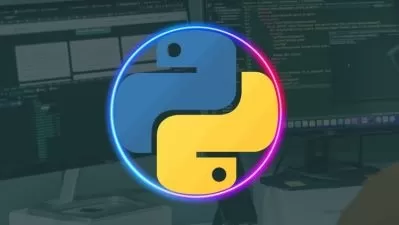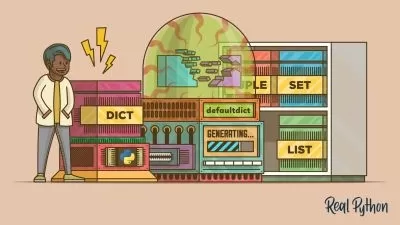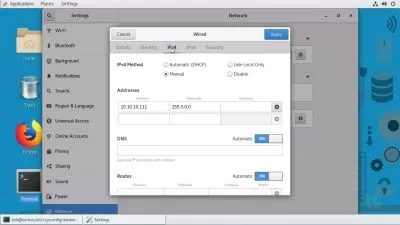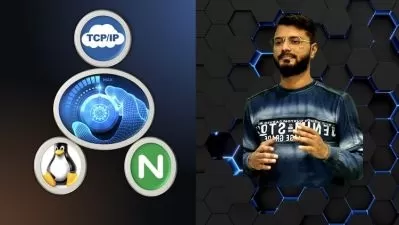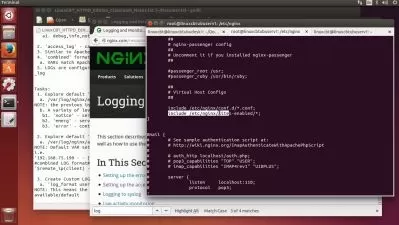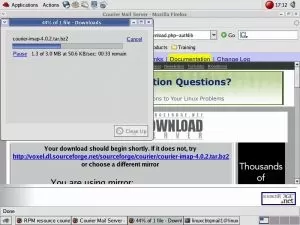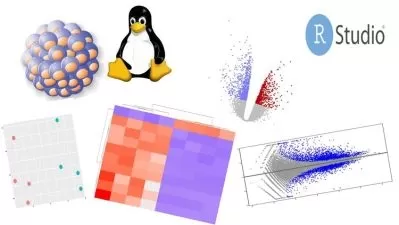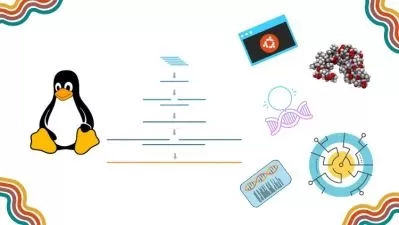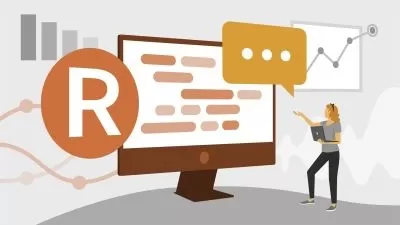Bioinformatics Data Analysis: Master Python, R and Linux
Abdul Rehman Ikram
12:07:49
Description
Mastering Python, R, and Bash for Efficient Biological Data Processing and Analysis
What You'll Learn?
- Fundamentals of Python, R, and Bash scripting: Learn the basics of these scripting languages, including syntax, data types, variables, and control structures.
- Data parsing and manipulation: Understand how to parse and manipulate various biological data types, such as DNA sequences, protein structures, and gene express
- Data visualization: Learn how to visualize biological data using Python and R, including creating plots, charts, and graphs to gain insights from the data.
- Statistical analysis: Explore statistical analysis techniques in R for analyzing biological datasets, including hypothesis testing, regression analysis, and clu
- Automation and pipeline development: Learn how to automate repetitive tasks and build efficient data processing pipelines using Bash scripting.
- Real-life data analysis projects: Apply the skills learned throughout the course to real-life biological datasets, gaining hands-on experience in bioinformatics
- Best practices in bioinformatics scripting: Learn best practices for writing clean, efficient, and maintainable scripts for bioinformatics analysis.
Who is this for?
What You Need to Know?
More details
DescriptionWelcome to "Bioinformatics Scripting: From Data Parsing to Analysis," a comprehensive course designed to equip you with the essential skills in Python, R, and Bash scripting for effective biological data processing and analysis.
In the rapidly evolving field of bioinformatics, the ability to efficiently analyze and interpret biological data is crucial. This course is designed to help you master the scripting languages commonly used in bioinformatics—Python, R, and Bash—and apply them to real-life biological datasets.
The course begins with an introduction to the fundamentals of Python, R, and Bash scripting, including basic syntax, data structures, and control flow. You will then learn how to parse different types of biological data, such as DNA sequences, protein structures, and gene expression profiles, using these scripting languages.
As you progress through the course, you will explore advanced topics such as data visualization, statistical analysis, and machine learning in Python and R. You will also learn how to automate repetitive tasks and build efficient data processing pipelines using Bash scripting.
By the end of the course, you will have the skills and confidence to tackle complex bioinformatics problems and conduct meaningful analyses of biological data. Whether you are a biologist looking to enhance your computational skills or a programmer interested in applying your skills to biological research, this course will provide you with the knowledge and tools you need to succeed in the field of bioinformatics.
Join us on this exciting journey and take your bioinformatics skills to the next level!
Who this course is for:
- Biologists: Biologists who want to enhance their computational skills and learn how to analyze biological data using scripting languages.
- Programmers: Programmers interested in applying their skills to biological research and learning about the unique challenges of bioinformatics data analysis.
- Students: Students studying bioinformatics, biology, computer science, or related fields who want to gain practical skills in bioinformatics scripting.
- Professionals: Professionals working in the field of bioinformatics who want to update their skills and learn new techniques for data analysis.
- Anyone interested in bioinformatics: Individuals with a general interest in bioinformatics and a desire to learn more about how biological data is analyzed using scripting languages.
Welcome to "Bioinformatics Scripting: From Data Parsing to Analysis," a comprehensive course designed to equip you with the essential skills in Python, R, and Bash scripting for effective biological data processing and analysis.
In the rapidly evolving field of bioinformatics, the ability to efficiently analyze and interpret biological data is crucial. This course is designed to help you master the scripting languages commonly used in bioinformatics—Python, R, and Bash—and apply them to real-life biological datasets.
The course begins with an introduction to the fundamentals of Python, R, and Bash scripting, including basic syntax, data structures, and control flow. You will then learn how to parse different types of biological data, such as DNA sequences, protein structures, and gene expression profiles, using these scripting languages.
As you progress through the course, you will explore advanced topics such as data visualization, statistical analysis, and machine learning in Python and R. You will also learn how to automate repetitive tasks and build efficient data processing pipelines using Bash scripting.
By the end of the course, you will have the skills and confidence to tackle complex bioinformatics problems and conduct meaningful analyses of biological data. Whether you are a biologist looking to enhance your computational skills or a programmer interested in applying your skills to biological research, this course will provide you with the knowledge and tools you need to succeed in the field of bioinformatics.
Join us on this exciting journey and take your bioinformatics skills to the next level!
Who this course is for:
- Biologists: Biologists who want to enhance their computational skills and learn how to analyze biological data using scripting languages.
- Programmers: Programmers interested in applying their skills to biological research and learning about the unique challenges of bioinformatics data analysis.
- Students: Students studying bioinformatics, biology, computer science, or related fields who want to gain practical skills in bioinformatics scripting.
- Professionals: Professionals working in the field of bioinformatics who want to update their skills and learn new techniques for data analysis.
- Anyone interested in bioinformatics: Individuals with a general interest in bioinformatics and a desire to learn more about how biological data is analyzed using scripting languages.
User Reviews
Rating
Abdul Rehman Ikram
Instructor's Courses
Udemy
View courses Udemy- language english
- Training sessions 78
- duration 12:07:49
- Release Date 2024/04/27






